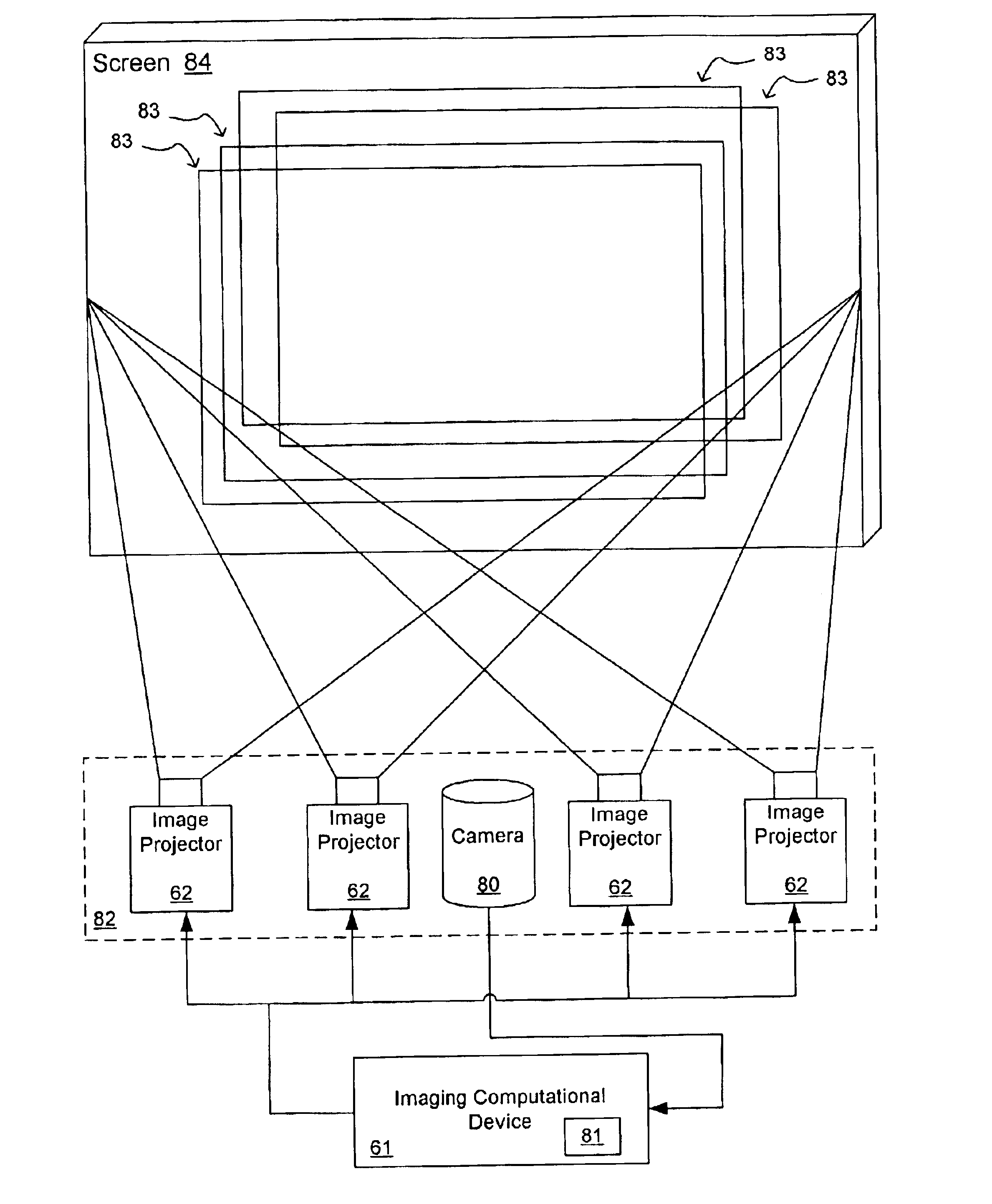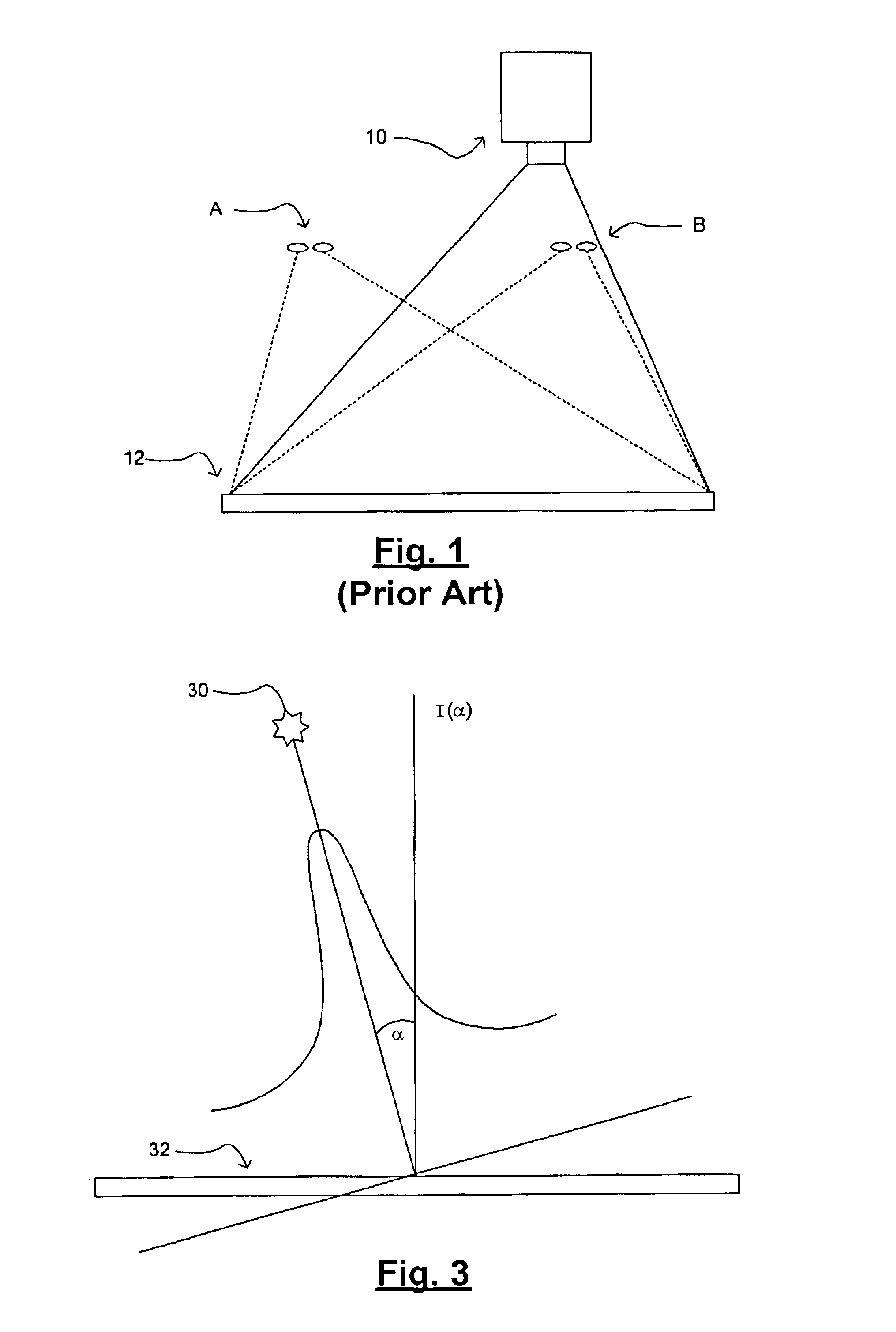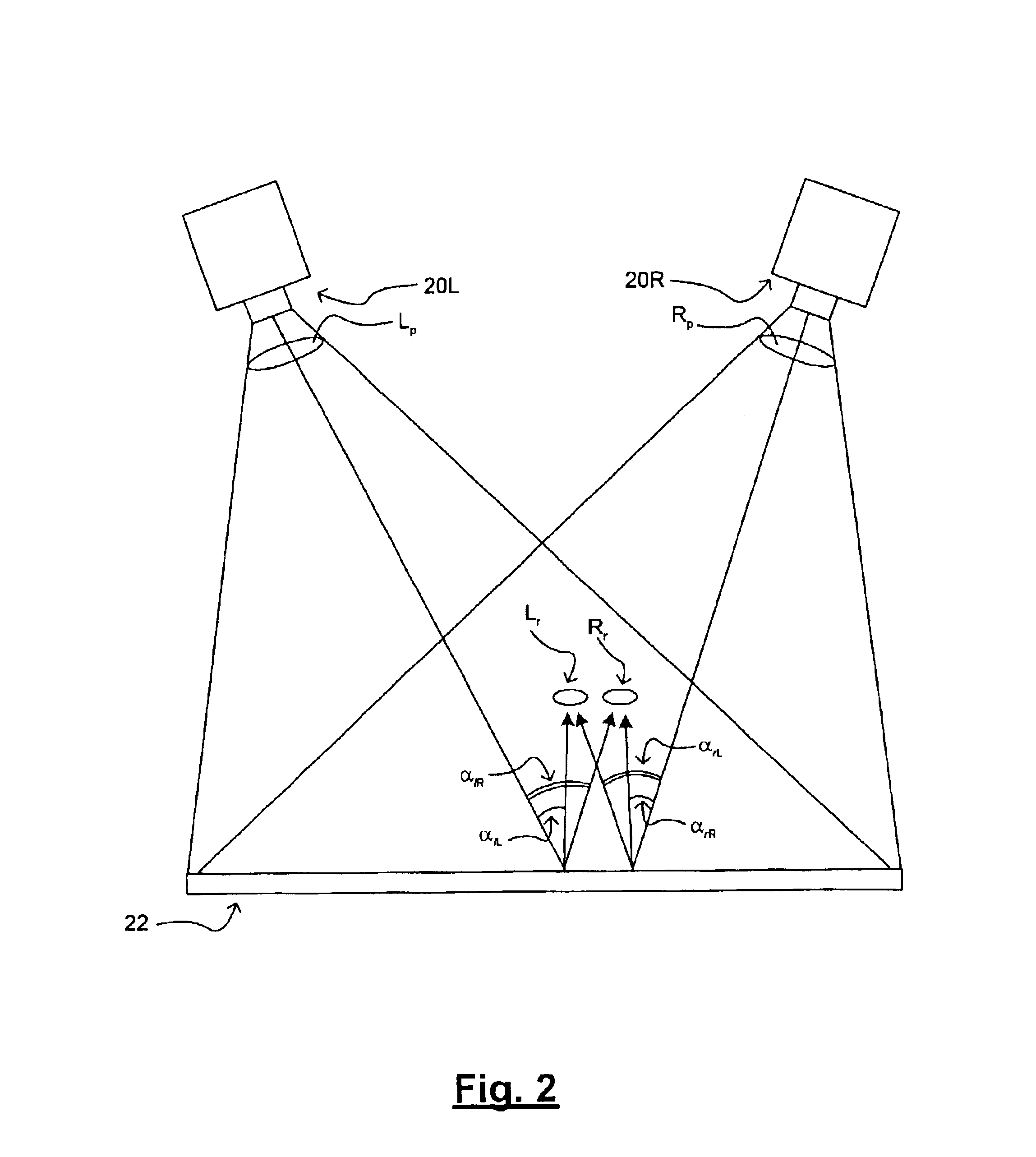Three-dimensional image projection employing retro-reflective screens
a three-dimensional image and retro-reflective technology, applied in projectors, instruments, stereoscopic photography, etc., can solve the problems of complex three-dimensional image technology, holographic imaging technology, and lack of real three-dimensional image provided by recreation, and achieve high resolution
- Summary
- Abstract
- Description
- Claims
- Application Information
AI Technical Summary
Benefits of technology
Problems solved by technology
Method used
Image
Examples
Embodiment Construction
The present invention in its preferred embodiment is an image projection system and related method for presentation of multiple aspects of an image to create a three dimensional viewing experience using at least two image projectors, an image generation system for controlling the image projectors, and a retro-reflective screen.
FIG. 2 schematically depicts the projection of three-dimensional images according to one embodiment of the present invention. As illustrated in FIG. 2, a three-dimensional or stereographic image is presented to a viewer using at least two projectors 20L and 20R to project calculated image Lp and calculated image Rp, respectively, such as from respective transmissive LCDs or other similar pixel-based displays, onto the retro-reflective screen 22 to present appropriate retro-reflected images Lr and Rr to the viewer's left and right eyes.
In embodiments of the invention, the retro-reflective screen 22 reflects light according to a non-linear distribution pattern t...
PUM
 Login to View More
Login to View More Abstract
Description
Claims
Application Information
 Login to View More
Login to View More - R&D
- Intellectual Property
- Life Sciences
- Materials
- Tech Scout
- Unparalleled Data Quality
- Higher Quality Content
- 60% Fewer Hallucinations
Browse by: Latest US Patents, China's latest patents, Technical Efficacy Thesaurus, Application Domain, Technology Topic, Popular Technical Reports.
© 2025 PatSnap. All rights reserved.Legal|Privacy policy|Modern Slavery Act Transparency Statement|Sitemap|About US| Contact US: help@patsnap.com



